Business Messaging
Art di Cacao sees sweet sales growth with WhatsApp
|
October 20, 2025
Business Messaging
|
October 20, 2025
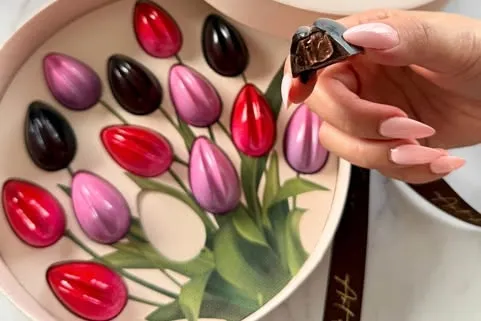
Businesses that take the time to optimize their ad strategies can see a big payoff in brand awareness, competitive differentiation and ROI. Upscale ecommerce chocolatier Art di Cacao did just that.
The company, which delivers beautifully packaged and delicious confections to customers across Mexico City, boosted sales by 56% with one of its recent WhatsApp campaigns. Read on to hear from Art di Cacao’s founder, Iván Contreras Esparza, about his insights on ad optimization – with lessons for other small and medium-sized businesses (SMBs) across industry sectors.


Tell us about Art di Cacao and how it all started.
We founded Art di Cacao during the pandemic. Many department stores closed so we looked for new opportunities. We saw this concept in Europe and decided to try it here. When we began testing it and promoting Art di Cacao on Instagram and Facebook, we received a very good response from the public. Since then, business has exploded.

Art di Cacao’s founder,
Iván Contreras Esparza
Are holidays and special occasions a big part of Art di Cacao’s business?
We have four holidays that are very important for gifting: Christmas, Valentine’s Day, Mother's Day and Father's Day. These are very different from our normal months of operations. We prepare special edition holiday products and packaging. We create special advertising campaigns, and they have a significant impact on our sales — we sell two or three times more than on a normal day.
Are digital marketing and social media important to Art di Cacao's success?
Quite a bit. We don't have a physical store location yet, but we plan to open one within the year. Currently, all of our marketing efforts are based on online advertising campaigns and social media.
During a seasonal period, online marketing is even more important because our costs per order are much lower than the average day. We take advantage of the lowered costs by making more aggressive investments in our advertising campaigns, since our returns are so much stronger than in a normal month. For our business to be successful, it’s critical for us to prepare for the key holiday periods and run effective advertising campaigns.
How important is it to instantly connect with a customer the moment they're considering your products?
It’s very important. We manage different types of campaigns through WhatsApp and there are customers who sometimes need that final push to make a purchase. Some have questions or concerns. Others are afraid to make a purchase online. By dedicating a little bit of time to provide customers with the information they need via WhatsApp, we can often make the sale.
What inspired you to start using social media advertising and ads that click to WhatsApp?
At first, about three years ago, we only did Instagram posts. When WhatsApp ads started happening, we didn't know if we should try them, because what we were doing was already working for us. We decided to allocate a portion of our budget to test WhatsApp ads and got positive results.
After adopting an ads strategy, we started doing really well and refining that work. Our main marketing priority became WhatsApp campaigns and sending more personal messages on WhatsApp. We came to realize that when a customer decides to leave the platform they were on when they saw our ad and switch over to WhatsApp to inquire about our products, that’s a strong indicator of interest and purchase intent.
What was the main objective of the campaign test you launched last year using purchase optimization for ads on WhatsApp?
We ran a test with two WhatsApp campaigns. One was optimized for interactions and the other for purchases. We used the same ad graphics, just targeting different audiences with different types of priorities and characteristics.
We observed that the campaign optimizing for interactions gave us a much higher volume of WhatsApp messages than the campaign optimizing for purchases. There came a point when there were too many to handle.
In the purchase optimization campaign, the volume of messages went down, but those people were much more intent on making a purchase. We liked the fact that we could spend less time responding to so many people while also achieving a higher conversion rate.
We learned that a purchase optimization campaign requires a slightly larger budget so that the algorithm can learn who your customers are. We can also add tags to get higher-quality customers or messages.
Ultimately we achieved 56% more purchases from ads that click to WhatsApp using purchase optimization.
How did this WhatsApp purchase optimization campaign improve or change your conversations and relationships with customers?
Our products command a fairly high price. The purchase optimization campaign on WhatsApp helped us better target customers who are comfortable with our price points.
Reaching better-qualified prospects improves the quality of our WhatsApp conversations. These audiences are more aware of the upscale nature of our products and aren’t as price-sensitive. Conversations progress quickly to “I want to buy this gift box, but I have a question about the chocolate. What flavor is it?" They have more specific questions about making a purchase.
The campaign got us away from vague and unproductive conversations like, "Hey, your products are too expensive, can you give me a discount?"
Sometimes people told us, "Thank you, I don't want this gift box right now, but my anniversary is in a month, so I'll come back and buy this later." So we had better-quality conversations of that nature too.
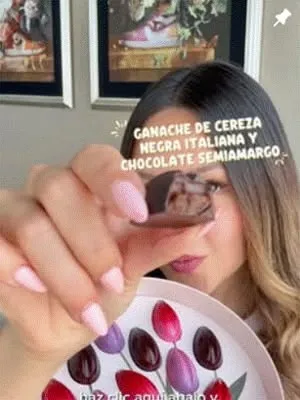
Can you explain the creative process behind the ads and videos you use in your campaigns?
This process has been changing as we learn along the way. As an entrepreneur, you often think things will work, only to suddenly realize they won't. When we founded Art di Cacao, our marketing was very organic. It was all created on a cell phone and it helped us get where we are today.
About two years ago, we did a test with one of the most renowned photographers in Mexico City. We ran four months of campaigns and began to notice that our results were declining.
We had thought that by presenting a more professional look, we would gain a stronger reception. But we realized that what really caught people's attention was advertising that seemed more natural. More organic, not as highly produced. We returned to more organic content recorded with a cell phone and started to get a much better response again.
We’ve also learned that audiences like to see faces. They like to see a person who can explain what our product is like. So we’re using that approach in our ads and reels on a daily basis, having someone talk about what's inside the boxes, providing more details on the chocolates and what’s involved in the ordering and delivery process.
Does using WhatsApp for your customer interactions give you more success in upselling and cross-selling?
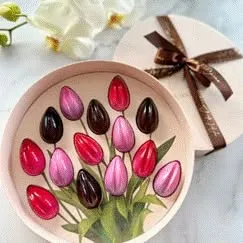
Yes, and this is important for Art di Cacao because our product is very customizable. People feel more at ease and confident in being able to customize their product exactly how they want it through WhatsApp. We can offer them a range of options and are often able to increase the order value. Someone who initially was only going to purchase one product might be convinced to buy two, especially when it comes to our seasonal items. For key holidays we can offer discounts on some customizations to boost the average order value.
How has your business grown as a result of these initiatives?
Last year our revenue grew by 30%. We’re very happy with the progress we’ve made. Our business has experienced seasonal peaks and valleys and there’s a lot of competition, but we've managed to maintain our overall growth trajectory.
How do Meta technologies like WhatsApp contribute to the overall effectiveness of Art di Cacao's marketing communications strategy?
It means everything to us. Currently we don't use any other advertising platform besides Meta. It generates all of our revenue. WhatsApp directly accounts for some 50% to 60% of our monthly sales.
We've noticed that WhatsApp is a very personal and popular tool in everyday use in Mexico. We often get inquiries and have WhatsApp conversations that stay on a potential customer’s phone over time. Since that conversation remains available on WhatsApp, it's very easy for them to contact us again a week or two later when they’re ready to buy. We use tools like saved responses to streamline conversations.
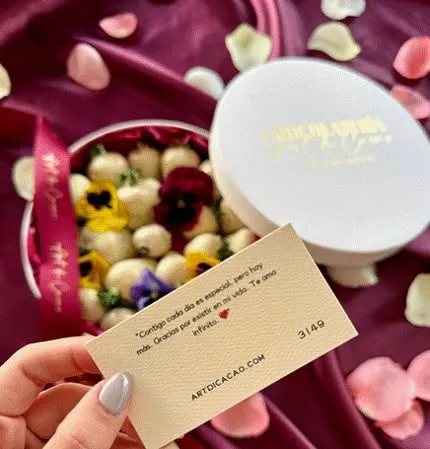
Has Art di Cacao increased its use of WhatsApp over time?
Yes, for two reasons. One is new customers, who contact us on WhatsApp due to our ad campaigns. Second is our existing customer base that looks for us directly on WhatsApp when they’re ready to place an order for their next special occasion. WhatsApp explodes for us seasonally because repeat contact is so easy. It’s a sales channel that grows and grows for us due to our loyal customers.
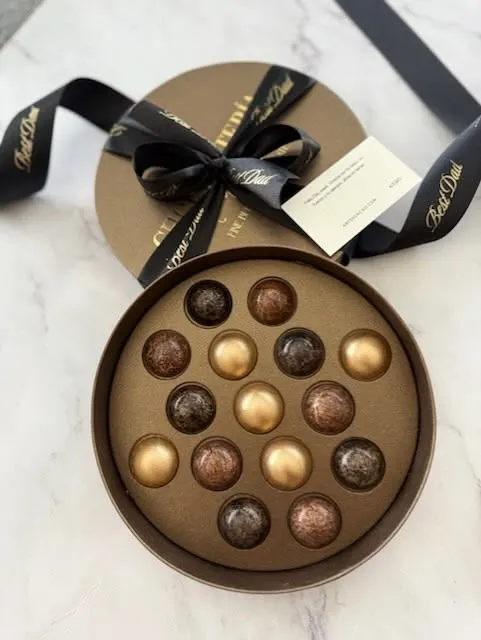
Over time we’ve achieved a dramatic improvement of up to 70% in the cost per order for our seasonal products, thanks to the ease of repeat purchasing through WhatsApp.
During our seasonal peaks we see strong ROI from all the leads generated from campaigns in prior months. Many of the prospects who didn't make a purchase earlier will buy when a holiday comes along.
For us, it’s important to go beyond creating holiday campaigns. Many other companies only run campaigns during key holiday periods. Our company has found success through ongoing campaigns. We never stop advertising.
It's like a snowball effect. It keeps building, building, and suddenly, seasonal opportunities arrive and all those prospects convert. It’s a matter of marketing consistency.
How has WhatsApp impacted your customer satisfaction?
WhatsApp has helped us improve customer satisfaction by allowing us to provide more personalized service. There are many customers who really want to speak to a human. Some people need personal contact. We’re happy to serve these customers via WhatsApp so that we can guide them through the purchasing process.
We also send satisfaction surveys via WhatsApp to get feedback on all of our product launches and our customer satisfaction ratings have been very good.
How did your WhatsApp ad plans for Mother's Day this year change based on what you learned last year?
We have fixed campaigns on both the web and WhatsApp. In the past, we added Mother's Day or other holiday ads to our year-round campaign. But we began to notice that removing those ads after the holiday was over created some instability in the campaign performance.
This year we created a completely separate campaign that only featured Mother's Day and it worked out great. It didn't destabilize our day-to-day campaigns. And our Mother’s Day WhatsApp campaign performed incredibly well.
Have you continued using WhatsApp shopping optimization or testing other possibilities?
We've been varying our WhatsApp campaigns and have run a number of tests. One of our Meta experts suggested that if we already had a web sales campaign, we should try a WhatsApp campaign with interaction to generate more traffic from those leads. We began that combination a few months ago and it's going very well.
What advice would you give to other companies considering using WhatsApp in their marketing plans?
I would recommend it 100%, especially for medium-sized and small businesses. Why? First, because it helps you get to know your customer.
Often, as entrepreneurs or business owners, we think we know our customers. But many times we don't really understand how the customer views our product or the questions they might have after viewing our ads. Maybe it's very obvious to us how we're trying to communicate our message, but it’s not for the customer.
Using WhatsApp in our ads allows us to learn what questions customers have. If we receive 100 questions that are all the same, we’re clearly not communicating well and have room to improve. We can create our next campaign with that learning in mind.
It's essential to try to get to know your customer and get that direct feedback. It all starts with creating tests. Try new possibilities, but keep in mind there’s a learning curve, meaning you have to dedicate time to testing, analyzing and adjusting so the ads can start to produce the results you expect.
It’s very important to have patience. It’s easy to lose patience and say, "You know what, we did it for a week and it didn't work." We have to learn to be more receptive to what our own audience is telling us. Plan for a learning curve.
Second, WhatsApp is great for driving sales. These days, everyone wants to sell online and eliminate personalized attention, but there are many people who still want and need that attention. WhatsApp helps you accompany potential customers on the sales journey and close more sales.
So yes, WhatsApp is super important, and yes, I highly recommend it.
Looking ahead, how does Art di Cacao plan to expand use of WhatsApp or other digital tools to improve customer engagement?
We’re always working to improve the overall customer experience, not just once we've sold them, but all the way until they receive the product. We’re working on delivery notifications. We’re also looking to improve how we get feedback after the delivery. We want to make the customer feel that we’re taking the entire journey into account.
Our next step with WhatsApp is to enhance how we provide support to customers, making them feel confident in their purchase and letting them know that we’re interested in their opinions. From lead generation to fostering loyalty, being able to manage the entire customer lifecycle with WhatsApp is incredible.
From Mother’s Day to Christmas and all the chocolate gift occasions in between, Art di Cacao continues to fuel impressive business growth with marketing strategies revolving around WhatsApp. To learn more, read the Art di Cacao case study on ads that click to WhatsApp using purchase optimization.